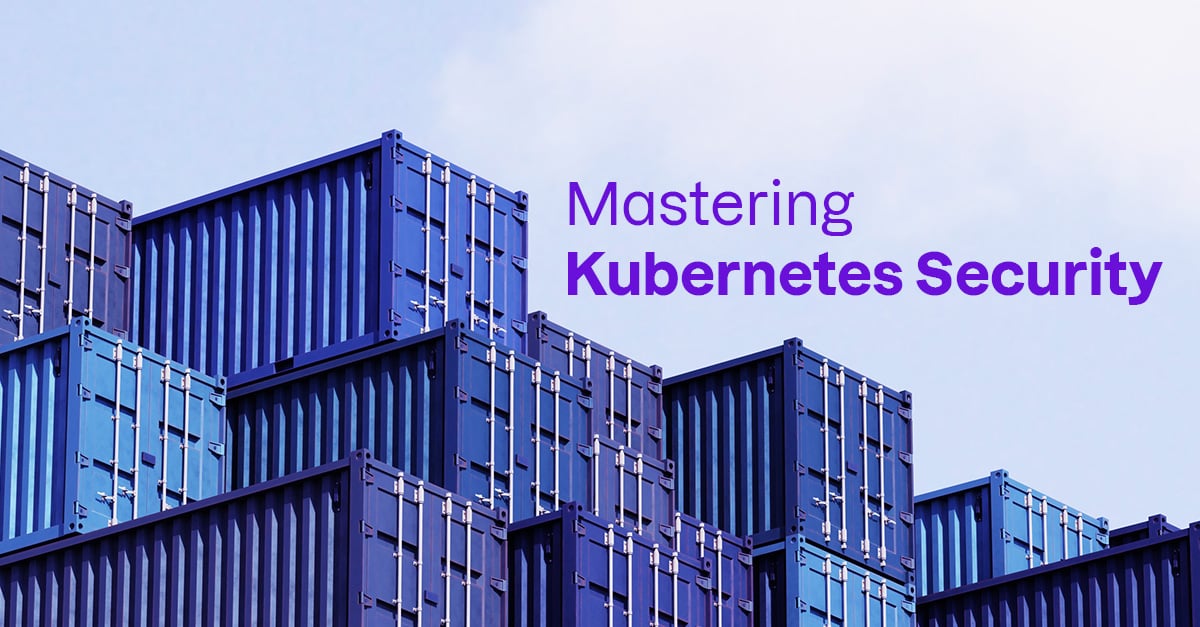You too can master Kubernetes security with Uptycs unified CNAPP and XDR.
Uptycs promotes a security-first culture, ensuring the success of Kubernetes adoption and future-proofing businesses. We know that Kubernetes security is vital for today's cloud-native ecosystems. To help you navigate this landscape effectively, we present an insightful series of blogs written by one of our in-house K8s experts, and Director of Product Management, Abhinav Mishra.
Dig into the blog series for a treasure trove of insights, best practices, and expert advice, designed to help you understand and implement robust security measures in Kubernetes environments.
Plus, we’ve curated this body of knowledge, and more, in the free downloadable eBook Mastering Kubernetes Security so you can take all this goodness home with you. The eBook complements the blog series, providing an in-depth exploration of the topics covered and additional insights, making it a must-have for professionals managing complex Kubernetes environments.
Get a copy for yourself
Explore the Kubernetes Security blog series
Mastering Kubernetes Security #1: NSA Hardening for KSPM
Emphasizes the importance of Kubernetes security posture management, especially in cloud-native applications across major cloud providers like AWS, Azure, and Google Cloud Platform. Mishra illustrates a three-step process for achieving continuous compliance with standards like the NSA Hardening rules and CIS Kubernetes Benchmarks.
Mastering Kubernetes Security #2: Vulnerability Management
Discusses the difficulties of prioritizing vulnerabilities amid the noise of ephemeral workloads and the necessity of integrating security across the software development life cycle (SDLC). It emphasizes how Uptycs streamlines vulnerability management from code to cloud, ensuring a secure and efficient Kubernetes environment.
Mastering Kubernetes Security #3: Runtime Admission Controls
Focuses on the importance of Runtime Admission Controls (RACs) in Kubernetes environments. RACs add a layer of protection by ensuring compliance and verification post-admission, but there are challenges in implementing these controls. Mishra outlines how Uptycs addresses these challenges by integrating with tools like OPA Gatekeeper, offering native admission control for image and runtime deployments.
Mastering Kubernetes Security #4: Authorization, Access & Secrets
Explores the limitations of Role-Based Access Control (RBAC) in managing sensitive data and secrets, highlighting common misconfigurations that pose security risks. Mishra illustrates how Uptycs integrates with Kubernetes to monitor permissions, detect suspicious activities, and map real-time threats to RBAC configurations, thereby enhancing overall security posture in Kubernetes environments.
Mastering Kubernetes Security #5: Incident Response with Detections
Addresses the increasing threats in Kubernetes environments, including cryptomining, exposed credentials, and data exfiltration. Mishra presents a framework for identifying and addressing these threats, emphasizing the importance of understanding common attack types, addressing blind spots through comprehensive telemetry collection, and adopting a threat hunter mindset. Uptycs facilitates this process through its event rules, scalable detection engine, and capabilities like YARA rule signatures for threat hunting. Learn how SecOps teams use Uptycs to effectively manage and respond to the evolving landscape of Kubernetes security threats.
The bottom line
Whether you are starting your Kubernetes journey or seeking to enhance your existing security posture, the "Mastering Kubernetes Security" series is a valuable resource. Each entry in this series outlines specific aspects of Kubernetes security, helping you build a robust and secure cloud-native infrastructure.
Stay ahead of the curve with Uptycs’ expert insights and practical solutions. Download the free eBook today.







